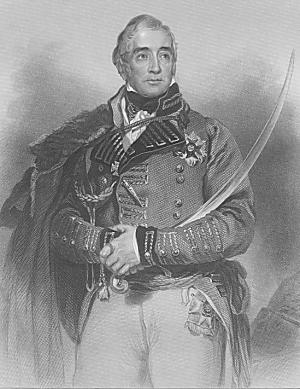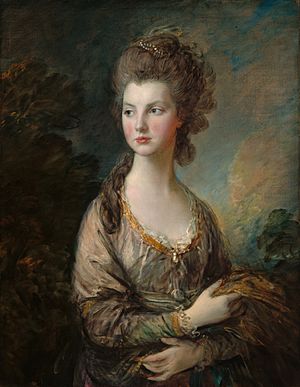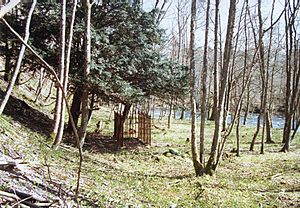Thomas Graham, 1st Baron Lynedoch facts for kids
Quick facts for kids
General The Right Honourable
The Lord Lynedoch
|
|
|---|---|

Portrait of Thomas Graham from the frontispiece of his biography by Alexander M. Delavoye published in 1880
|
|
| Member of Parliament for Perthshire |
|
| In office 1794–1807 |
|
| Preceded by | James Murray |
| Succeeded by | Lord James Murray |
| Majority | Unanimous |
| Personal details | |
| Born | 19 October 1748 Balgowan House, Perthshire, Scotland, Kingdom of Great Britain |
| Died | 18 December 1843 (aged 95) London, England, United Kingdom of Great Britain & Ireland |
| Political party | Whig |
| Spouse | Mary Cathcart |
| Alma mater | University of Oxford |
| Occupation | Member of Parliament, Soldier |
| Military service | |
| Allegiance | |
| Branch/service | British Army |
| Years of service | 1793–1814 |
| Rank | General |
| Battles/wars | French Revolutionary Wars |
Thomas Graham, 1st Baron Lynedoch (1748–1843) was a brave Scottish soldier and politician. He was born into a wealthy family and studied at Oxford. After finishing school, he took over his family's large estate in Scotland.
For many years, he lived a quiet life as a gentleman, managing his land. But when his wife passed away, he decided to join the army. He became a key figure in the French Revolutionary Wars and the Napoleonic Wars. People described Graham as tall, strong, and kind. He was known for his honest and friendly manner.
Contents
Who Was Thomas Graham?
Thomas Graham was born in 1748 in Perthshire, Scotland. He was the only son of Thomas Græme and Lady Christian Hope. He was taught at home by private tutors. Later, he went to Christ Church, Oxford in 1766. The next year, he inherited his family's estate when his father died.
After college, he traveled around Europe. He learned to speak French, German, and Spanish. When he returned to Scotland, he focused on improving his land. He encouraged farmers to use new methods. He also planted many trees and raised better kinds of horses, cattle, and sheep.
In 1785, he bought another estate called Lynedoch. He loved outdoor sports like fox hunting and deer hunting. He believed these activities helped him develop a good eye for land and distances. This skill later proved very useful in his military career.
His Early Life and Marriage
In 1772, Graham tried to become a Member of Parliament for Perth. He lost by a small number of votes. He stayed involved in politics but stopped campaigning in 1774. This was because he got engaged to Mary Cathcart. Her sister was marrying the son of the Duke of Atholl.
In 1774, Thomas married Mary. Her sister also married the Duke of Atholl's son on the same day. Mary's father said that Mary married "the man of her heart, and a peer among princes." Thomas was a very caring husband. Once, Mary forgot her jewelry at home before a ball. Thomas rode 90 miles there and back to get it for her.

A famous artist, Thomas Gainsborough, painted a portrait of Mary in 1777. It was very popular. After Mary died, Thomas covered the painting. Today, you can see it in the National Galleries of Scotland in Edinburgh.
For 18 years, Graham lived as a country gentleman. He enjoyed riding, sports, and reading classic books. He also visited London and Edinburgh. Once, a highwayman tried to rob his carriage in London. Graham bravely fought him off and had him arrested.
A Great Loss and a New Path

Mary Graham's health began to fail. In 1792, she traveled to France with Thomas. Sadly, she died during the journey on June 26, 1792. Thomas was heartbroken. He arranged for her body to be taken back to Scotland. On the way, French soldiers opened her coffin. This made Thomas very angry.
He buried Mary in a special tomb he built in Methven churchyard. He would be buried there himself 50 years later. A Scottish fiddle tune was written to honor Mary.
Mary's death deeply affected Thomas. He traveled for a year but was still very sad. At 43 years old, he decided to join the army. He wanted to forget his sorrow and get revenge on the French for what happened to Mary's coffin.
Thomas Graham's Military Career
Joining the Army and Fighting in Toulon
In 1793, Graham joined the British forces. He went to Toulon, France, where he helped defend the town. He acted as an assistant to Lord Mulgrave. Graham showed great courage and energy. Once, when a soldier was killed, Graham picked up his gun and took his place. Lord Mulgrave praised Graham for his brave example.
It was in Toulon that Graham met Rowland Hill. Hill later became a famous British army commander. They became lifelong friends.
Raising a Regiment and Fighting in Mantua
After returning home, Graham was made a temporary lieutenant-colonel. He raised a new regiment called the 90th Regiment of Foot. His friend Rowland Hill became a major in this regiment.
In 1796, Graham joined the Austrian army in Germany. He helped defend Mantua against Napoleon's French army. The city was running out of food. Graham bravely traveled 50 miles through enemy territory to get help. He walked through swamps and rivers, hiding during the day. He finally reached the Austrian general, but the Austrians were defeated, and Mantua surrendered.
Fighting in Malta and Egypt
In 1798, Graham helped capture Minorca. Then, he was put in charge of operations against Malta, which the French controlled. The island was very strong, so Graham had to blockade it. After almost two years, the French surrendered in 1800 because they ran out of food. Malta then became an important part of the British Empire.
In 1801, Graham went to Egypt. His regiment had fought bravely there. He also traveled through Turkey and rode horseback to Vienna. He said this was one of his most enjoyable journeys.
The Peninsular War: Spain and Portugal
In 1808, Graham went to Spain with Sir John Moore. He served with Moore during the difficult retreat to Corunna. Graham's help was very important to the tired troops. When Sir John Moore was fatally wounded, Graham was right beside him. Moore's last words included asking if Graham was safe.
After returning to England, Graham was promoted to major general. In 1809, he commanded a division in the Walcheren expedition. But he got sick and had to go home.
The Battle of Barrosa
Graham was promoted again to lieutenant general. He was sent to Cádiz, Spain, which the French were attacking. In February 1811, Graham decided to attack the French from behind. He sailed from Cádiz with 4,000 British soldiers and 7,000 Spanish troops.
On March 5, they reached the heights of Barrosa. The Spanish general ordered Graham's troops to move. But then, Graham saw the Spanish troops leaving the Barrosa hill. The French were quickly taking over the hill.
Graham decided to attack immediately. His British troops bravely charged the French. They defeated the French army and captured their eagle flag and cannons. Graham praised his soldiers, saying their bravery was "almost unparalleled."
William Napier said Graham's attack was "an inspiration." The French lost about 3,000 men. The British lost 200 killed and 900 wounded. If the Spanish general had helped more, the victory could have ended the French attack on Cádiz.
Lord Wellington congratulated Graham on his "signal victory." He said Graham's quick decision saved the whole allied army. The Spanish general was later put on trial. Graham was offered a special Spanish honor, but he refused it. He received thanks from the British Parliament instead.
Later Campaigns in Spain
In 1812, Graham joined Wellington's army. He helped capture Ciudad Rodrigo. Wellington said Graham was very important to their success. Graham also received the Order of the Bath. However, he had eye problems and had to go home. Wellington was very sad to lose his help.
Graham's eyesight improved, and he rejoined the army in Spain in May 1813. He played a big part in the battle of Vitoria on June 21. The French were completely defeated. Graham's troops blocked the French retreat, forcing them to change direction.
Next, Graham led the siege of the strong fortress of San Sebastian. The first attack failed. But a second attack on August 31 was successful. Graham ordered cannons to fire over his own troops' heads at the fortress wall. This risky plan worked! It caused confusion among the enemy. The British troops then fought their way into the town.
On September 9, the French surrendered the fortress. This victory cost the British 3,800 men. Today, a memorial event is held every August 31 to remember these tragic days.
Graham also commanded the left wing of the British army when they crossed into France. But his eye problems returned, and his health declined. He had to resign his command and go home. For his services, he received thanks from Parliament and honors from the cities of London and Edinburgh.
Final Military Command
In 1814, Graham's health improved. He took command of British forces in the Netherlands. He supported an attack on Hoogstraten. However, his attempt to capture the fortress of Bergen op Zoom in a night attack failed.
Life After the Wars
On May 3, 1814, Thomas Graham was given the title Baron Lynedoch. He was offered £2,000 a year to go with the title, but he refused the money. He also received many other honors from Britain, Spain, and Portugal.
He became a full general in 1821. He was also elected Rector of the University of Glasgow in 1813. In 1829, he became Governor of Dumbarton Castle.
Lord Lynedoch was known for being very active even in old age. He traveled often, visiting Italy, Germany, France, and Russia. In 1841, at 94 years old, he traveled through France to Rome. He even rode horses in Rome.
He died at his home in London on December 18, 1843, at the age of 95. He was buried next to his wife in the special tomb at Methven churchyard. Since he had no children, his title of Baron Lynedoch ended with him.
Bessie Bell and Mary Gray
This is a sad story connected to the Lynedoch estate. In 1645, during a plague, two young ladies, Bessie Bell and Mary Gray, built a small shelter to escape the disease. They lived there safely for a while. But they eventually caught the plague from a young gentleman who visited them.
According to custom during the plague, their bodies were not buried normally. They were left outside until only their bones remained. Then, their bones were safely buried near the River Almond.
When Thomas Graham bought the Lynedoch estate in 1787, he found the wall around their graves was falling apart. He had a new stone wall and iron railings built around the spot. He also placed a stone slab over the graves with the words: "They lived, they loved, they died."
Images for kids







